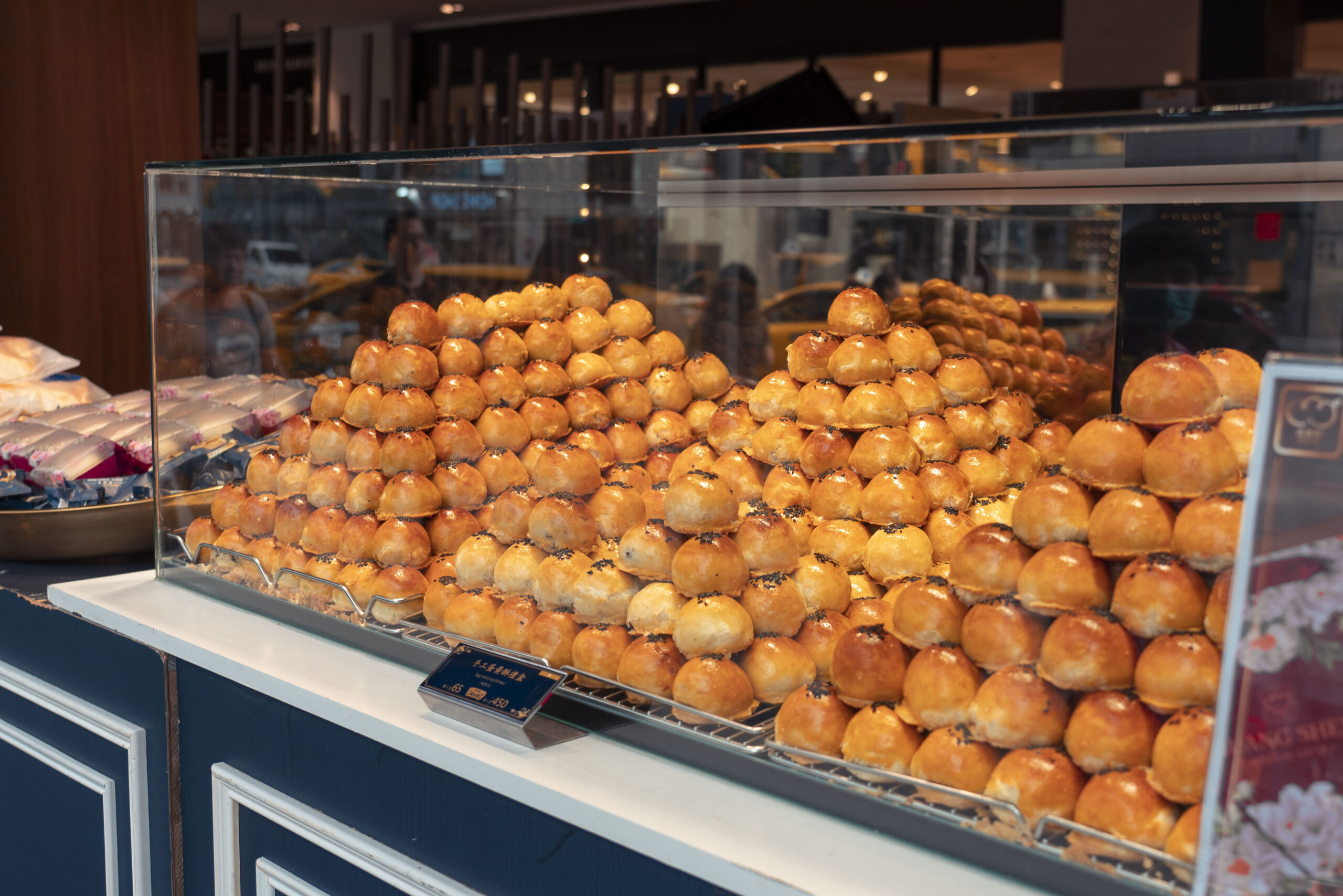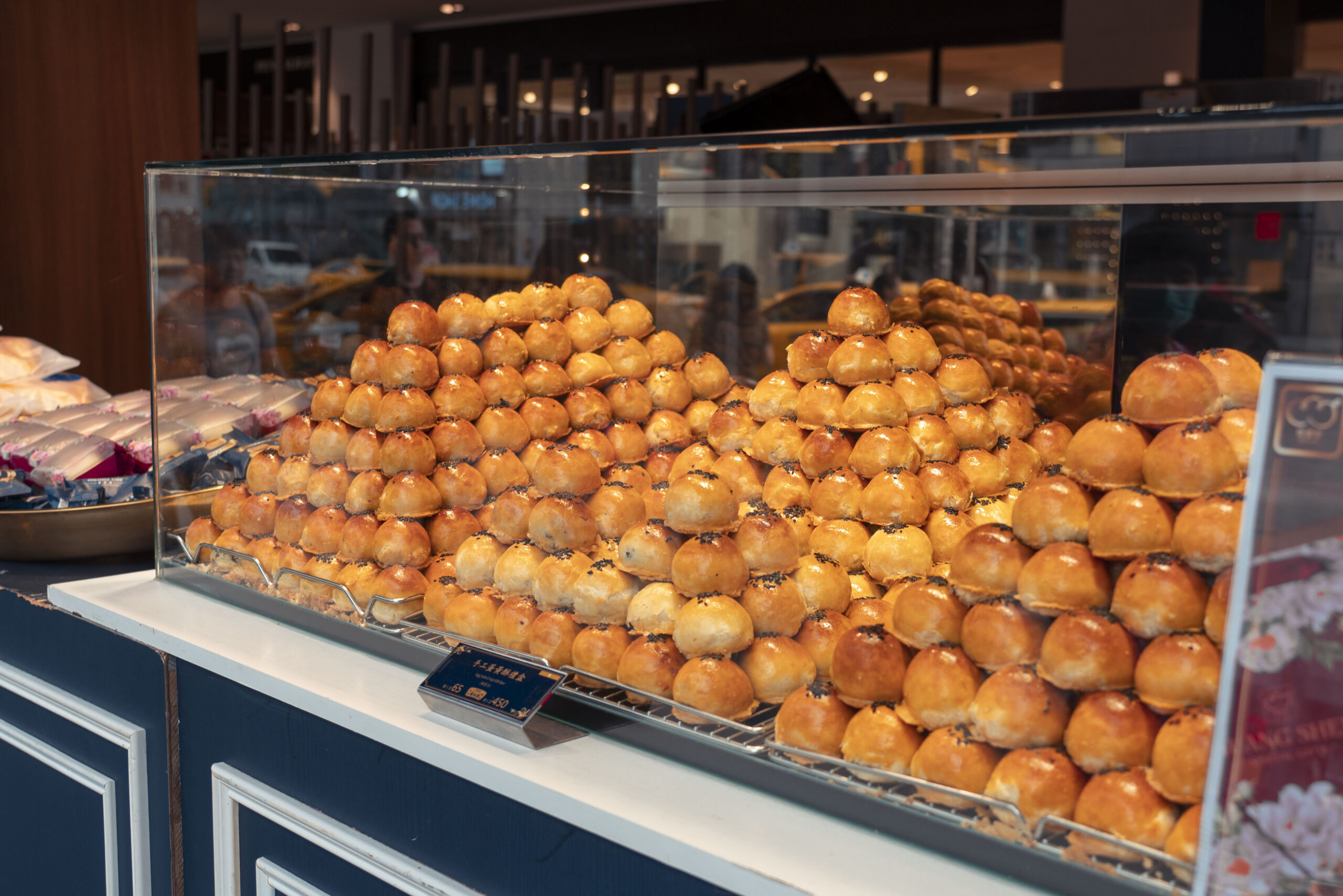In “The Science Of Baking: Understanding The Basics,” Tastepan serves as your culinary companion, providing expert guidance to help you master the art of cooking. With a focus on baking, this article delves into the fundamental principles that make the process both an art and a science. Through comprehensive guides and engaging videos, you will discover the secrets behind creating delectable baked goods that never fail to impress. So, whether you’re a seasoned chef or a beginner in the kitchen, get ready to unlock the science behind your favorite desserts and elevate your baking skills to new heights.

1. The Role of Ingredients
When it comes to baking, understanding the roles of different ingredients is crucial for achieving the perfect results. Each ingredient has a specific purpose and contributes to the overall texture, flavor, and structure of the final baked goods.
1.1 The Role of Flour
Flour is the backbone of baking. It provides structure and stability to baked goods. When mixed with liquid, the proteins in flour form gluten, which gives strength and elasticity to the dough or batter. The gluten network allows baked goods to rise and hold their shape during baking. Different types of flour, such as all-purpose flour, bread flour, and cake flour, have varying protein content, which affects the texture of the final product.
1.2 The Role of Sugar
Sugar is not just a sweetener; it plays a vital role in baking as well. Sugar adds moisture to baked goods, enhances flavor, and helps to create a golden-brown crust. It also contributes to the tenderness and texture of the final product. In addition, sugar helps to activate yeast, provide food for beneficial bacteria in sourdough, and keep certain baked goods moist and fresh.
1.3 The Role of Fat
Fat plays multiple roles in baking. It adds richness, flavor, and tenderness to baked goods. Fat coats the flour particles, preventing the formation of excessive gluten and resulting in a more tender texture. It also helps with the creaming process and provides moisture, especially in butter-based recipes. Additionally, fat aids in the browning of baked goods and contributes to their overall appearance.
1.4 The Role of Eggs
Eggs have several functions in baking. They act as a binder, holding the ingredients together and providing structure. Eggs also contribute to the moisture content of baked goods and add richness and tenderness. In addition, eggs can help with leavening and provide color and flavor to the final product. The fat in the yolk adds richness, while the protein in the white aids in structure formation.
1.5 The Role of Leavening Agents
Leavening agents, such as baking powder, baking soda, yeast, steam, and air, are responsible for the rise and lightness of baked goods. They release carbon dioxide gas during baking, creating air pockets that expand and lighten the texture of the finished product. Different leavening agents are used depending on the recipe and desired texture. Baking powder and baking soda are chemical leavening agents, while yeast is a biological leavening agent. Steam and air are physical leavening agents.
2. The Importance of Measurements
Accurate measurements are essential in baking to achieve consistent and successful results. The two main methods for measuring ingredients are weight and volume.
2.1 Weight vs Volume
Weight measurement is considered more accurate and reliable in baking. It provides precise measurements that ensure consistency and better control over the final outcome. Measuring ingredients by weight eliminates variables such as texture, moisture content, and air pockets, which can greatly affect volume measurements.
On the other hand, volume measurements are more common in home baking. They are based on using measuring cups and spoons to scoop and level off ingredients. While volume measurements may be less accurate, they are still widely used and can produce satisfactory results with practice and careful attention to measuring techniques.
2.2 Types of Measurement
There are various units of measurement used in baking. The most common are grams and ounces for weight, and cups and tablespoons for volume. It is important to follow the specific unit of measurement provided in the recipe to ensure accuracy. Using the correct measuring tools, such as kitchen scales, measuring cups, and spoons, is essential for precise measurements.
2.3 The Science of Ratios
Understanding the science of ratios in baking is crucial for achieving the desired results. Many baking recipes rely on specific ratios of ingredients to achieve the perfect balance of texture and flavor. For example, the ratio of flour to liquid determines the texture of the final product. The ratio of fat to flour affects the tenderness and richness. By understanding these ratios, you can modify and adjust recipes to meet your preferences while still maintaining the overall structure and consistency of the baked goods.

3. Understanding Baking Techniques
Mastering various baking techniques is essential for creating a wide range of delicious baked goods. Different techniques manipulate ingredients to achieve specific textures and structures.
3.1 Creaming
Creaming is a technique used to incorporate fat and sugar together to create a light and fluffy texture. It involves beating the fat (usually butter) and sugar together until they are pale and creamy. Creaming helps to incorporate air into the mixture, helping the baked goods rise and creating a tender crumb. It is commonly used in recipes for cakes, cookies, and muffins.
3.2 Folding
Folding is a gentle mixing technique used primarily in delicate batters and doughs. It involves adding a lighter mixture, such as whipped egg whites or whipped cream, to a heavier mixture, such as cake batter or mousse base. The goal is to gently combine the mixtures without deflating the lighter one. Folding helps to incorporate air, creating a light and airy texture. This technique is commonly used in recipes for soufflés, mousse, and certain cakes.
3.3 Whipping
Whipping is a technique that involves beating ingredients, usually eggs or cream, to incorporate air and create volume. When eggs are whipped, the proteins in the egg whites denature and form a foam, which gives structure and stability to the baked goods. Whipped cream, on the other hand, increases in volume and becomes thick and fluffy. Whipping is commonly used in recipes for meringues, angel food cakes, and mousses.
3.4 Kneading
Kneading is a technique used in bread baking to develop gluten and create a smooth and elastic dough. It involves pressing, folding, and stretching the dough to activate the gluten proteins. Kneading helps to develop structure and strength, resulting in a chewy and well-risen bread. This technique is commonly used in recipes for bread, pizza dough, and pasta.
3.5 Tempering
Tempering is a technique used for ingredients that need to be slowly brought to a specific temperature without causing undesirable changes. It is commonly used for incorporating eggs into hot mixtures, such as custards and sauces, without scrambling the eggs. Tempering involves gradually adding a small amount of the hot mixture to the eggs while whisking continuously, then adding the tempered eggs back to the remaining hot mixture. This technique ensures a smooth and creamy texture without any curdling or lumps.
4. The Role of Heat in Baking
Heat is a fundamental element in baking, as it transforms raw ingredients into flavorful and beautifully baked goods. Different methods of heat transfer contribute to the cooking process.
4.1 Conduction
Conduction is the transfer of heat through direct contact. In baking, it refers to the heat absorption by the baking pan and its subsequent transfer to the dough or batter. The direct contact with a hot surface allows the bottom of baked goods to cook and brown evenly. Using materials with good heat conductivity, such as metal baking pans, helps ensure proper conduction.
4.2 Convection
Convection is the transfer of heat through the movement of air or liquid. In baking, convection refers to the circulation of hot air within the oven. Convection ovens have a built-in fan that circulates the hot air, resulting in more even heat distribution and faster baking. This method is particularly useful for achieving crispy crusts and even browning.
4.3 Radiation
Radiation is the transfer of heat through electromagnetic waves. In baking, radiation refers to the heat generated by the oven’s heating elements, which emit infrared waves. The radiant heat directly affects the surface of the baked goods, enabling them to brown and caramelize. Radiation is especially important for achieving golden crusts on bread, pastries, and cookies.

5. Chemical Reactions in Baking
Chemical reactions play a significant role in the transformation of ingredients during the baking process. Understanding these reactions can help you troubleshoot baking problems and improve the flavor and texture of your baked goods.
5.1 Maillard Reaction
The Maillard reaction is a chemical reaction that occurs when proteins and sugars are heated together. In baking, it is responsible for the browning and development of flavors in baked goods. The Maillard reaction produces a range of complex flavors, including nutty, toasty, and caramel-like notes. It contributes to the aroma, taste, and appearance of baked goods such as bread, cookies, and cakes.
5.2 Caramelization
Caramelization is the process of heating sugar until it melts and turns into a golden brown syrup. It occurs at higher temperatures than the Maillard reaction and is responsible for creating the characteristic caramel flavor. Caramelization adds depth and richness to baked goods, such as custards, pies, and caramel sauces.
5.3 Gelatinization
Gelatinization is the process of starch granules absorbing water and swelling when exposed to heat. It occurs during the baking process when doughs and batters are heated. Gelatinization is essential for thickening and stabilizing baked goods, such as custards, puddings, and pastries. It contributes to the final texture and structure of the product.
5.4 Denaturation
Denaturation refers to the structural change of proteins when exposed to heat, acid, or mechanical action. In baking, denaturation is crucial for transforming the proteins in ingredients like eggs and gluten into a network that provides structure and stability to the final product. The denaturation of proteins occurs during mixing, kneading, whipping, and baking processes.
6. The Science Behind Leavening
Leavening agents are essential in baking as they help baked goods rise, providing a light and airy texture. Understanding the science behind different leavening agents can help you choose the right one for your recipe.
6.1 Yeast
Yeast is a biological leavening agent that produces carbon dioxide gas through fermentation. Yeast consumes sugar and produces alcohol and carbon dioxide as byproducts. The carbon dioxide gas gets trapped in the dough, causing it to rise and giving the baked goods their airy texture. Yeast usually requires proofing, which activates the yeast before incorporating it into the dough.
6.2 Baking Powder
Baking powder is a chemical leavening agent that contains an acid and a base. When mixed with moisture and heat, the acid and base react to produce carbon dioxide gas. Baking powder is commonly used in recipes that do not include acidic ingredients. It is an all-in-one leavening agent that provides both acidity and gas production.
6.3 Baking Soda
Baking soda, also known as sodium bicarbonate, is another chemical leavening agent. Unlike baking powder, it requires an acidic ingredient, such as buttermilk, yogurt, lemon juice, or vinegar, to react and produce carbon dioxide gas. Baking soda is commonly used in recipes that already contain acidic ingredients. It helps to neutralize acidity and create a light and fluffy texture.
6.4 Steam
Steam is a physical leavening agent produced when water evaporates during the baking process. The evaporation of water produces steam, which expands and creates air pockets in the dough or batter. Steam leavening is commonly used in high-moisture doughs, such as choux pastry and puff pastry. It contributes to the rise and lightness of these baked goods.
6.5 Air
Air is a natural leavening agent that is incorporated into batters and doughs during mixing. The incorporation of air through techniques like creaming, whipping, and folding creates air pockets, which expand during baking. Air leavening is essential for creating light and fluffy textures in cakes, cookies, and bread.
7. The Importance of Time and Temperature
Proper timing and temperature control are crucial in baking to ensure that the ingredients are transformed into the desired texture and flavor.
7.1 Oven Temperature
Oven temperature plays a significant role in the baking process. It affects the overall rise, browning, and texture of the baked goods. Precise temperature control is essential for achieving consistent results. Different recipes require specific temperature settings, usually indicated in the recipe instructions. Preheating the oven is also crucial to ensure even cooking from the start.
7.2 Baking Time
Baking time varies depending on the recipe, the size and shape of the baked goods, and the desired doneness. It is important to follow the recommended baking time provided in the recipe as a guide. Factors like oven variations, altitude, and pans used may affect the baking time. Monitoring the baked goods closely towards the end of the recommended time and performing a toothpick or finger test can help determine doneness.
7.3 Resting Time
Resting time is an often overlooked but critical step in baking. After removing baked goods from the oven, allowing them to rest for a specified period is important. Resting time allows the structure of the baked goods to set and stabilize, making them easier to handle and preventing them from collapsing. The resting time also allows flavors to develop further, resulting in a more harmonious taste.
8. The Role of pH in Baking
pH, or the measure of acidity or alkalinity, plays a role in the success and characteristics of baked goods. Understanding the impact of pH can help you make adjustments and achieve the desired results.
8.1 Acidity and Alkalinity
The pH of ingredients affects the flavor, texture, and overall quality of baked goods. Different ingredients have varying levels of acidity or alkalinity. For example, buttermilk and sourdough are acidic, while baking soda is alkaline. Acidic ingredients can react with leavening agents like baking soda to produce carbon dioxide gas, resulting in a lighter texture. On the other hand, too much acidity can inhibit gluten formation and affect browning.
8.2 Effects on Leavening
pH plays a critical role in the effectiveness of leavening agents. Some leavening agents, like baking soda, require an acidic environment to react and produce carbon dioxide gas. The acid present in the batter or dough activates the leavening agent. In contrast, alkaline environments can neutralize acidity and affect the leavening process. Understanding the pH of your ingredients and adjusting them accordingly can help achieve the desired rise and texture.
8.3 Effects on Flavor and Color
pH also affects the flavor and color of baked goods. Different pH levels can enhance or alter the taste of ingredients. Acidic environments can intensify flavors and produce tangy or sour notes. On the other hand, alkaline environments can dull flavors and affect the overall taste. pH also influences the Maillard reaction and caramelization, affecting the color development and browning of baked goods.
9. Understanding Gluten
Gluten is a protein complex found in wheat, barley, and rye. It plays a crucial role in baking, especially in the structure and texture of bread and other baked goods.
9.1 Formation of Gluten
Gluten is formed when two proteins, glutenin and gliadin, combine with water and are mixed or kneaded. As the proteins hydrate, they form a network of strands, which gives dough its elasticity and provides structure. The gluten network traps carbon dioxide gas during fermentation or leavening, resulting in the rise and structure of the baked goods.
9.2 Importance in Baking
Gluten is essential in baking, particularly in bread making. It provides the structure and support necessary for dough to rise and hold its shape during baking. The proteins in gluten also contribute to the texture and chewiness of bread. However, too much gluten formation can lead to a dense and tough texture, while too little can result in a crumbly or flat baked product. Understanding gluten and its behavior can help you achieve the desired texture in your baked goods.
9.3 Gluten-Free Baking
For individuals with gluten intolerance or celiac disease, gluten-free baking is essential. Gluten-free baking involves using alternative ingredients such as rice flour, almond flour, or tapioca flour to replace wheat flour. These alternative flours do not contain gluten and require additional ingredients or techniques, such as xanthan gum or eggs, to provide structure and prevent crumbly textures. Understanding the science behind gluten-free baking can help you create delicious gluten-free treats.
10. The Science of Different Baking Methods
Different baking methods have their own unique scientific principles and considerations. Understanding these methods can help you choose the most suitable method for your desired outcome.
10.1 Traditional Oven Baking
Traditional oven baking involves baking in a conventional oven without any additional enhancements. It relies on a combination of conduction, convection, and radiation for heat transfer. Traditional oven baking provides even heat distribution and is suitable for a wide range of baked goods, including cakes, cookies, bread, and pastries.
10.2 Convection Oven Baking
Convection oven baking involves using an oven with a built-in fan that circulates hot air. The circulating air provides more even heat distribution, resulting in faster and more efficient baking. Convection oven baking is particularly useful for achieving crispy and evenly browned crusts. It is commonly used for cookies, pastries, and roasting.
10.3 Microwave Baking
Microwave baking utilizes the heat generated by microwaves to cook or partially bake certain types of baked goods. Microwaves heat the water molecules present in the food, resulting in the cooking process. However, microwave baking has limitations and is not suitable for all types of baked goods. It is commonly used for quick individual servings, such as mug cakes and microwave cookies.
10.4 Sous Vide Baking
Sous vide baking involves cooking or baking ingredients in a water bath at a precise and controlled low temperature. The sealed ingredients are immersed in the water bath and cooked long and slow to achieve a specific texture and desired doneness. Sous vide baking is particularly suitable for custards, cheesecakes, and delicate desserts that require precise temperature control.
Mastering the science behind baking techniques, ingredients, measurements, heat, chemical reactions, leavening, time, and temperature is crucial for becoming a skilled and confident baker. By understanding the fundamental principles and concepts, you can unleash your creativity, troubleshoot problems, and create mouthwatering baked goods that will delight and impress. So roll up your sleeves, preheat your oven, and embark on your baking journey armed with a newfound knowledge of the science of baking!

